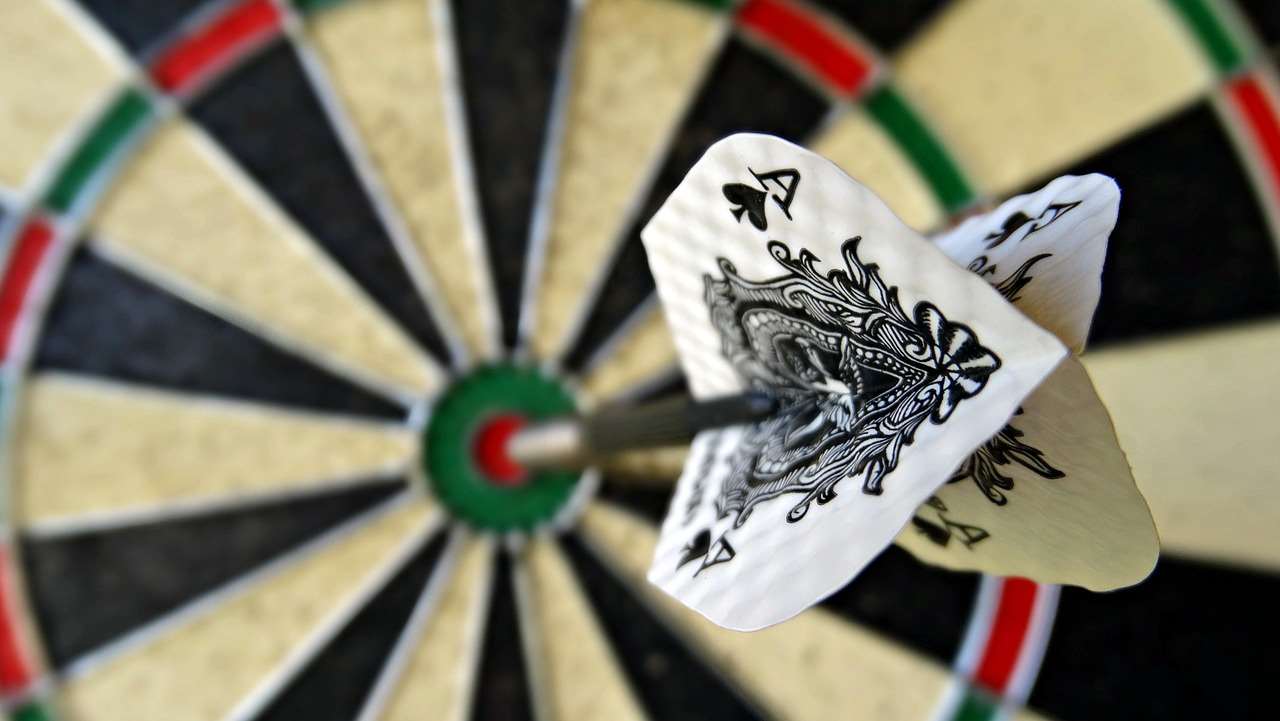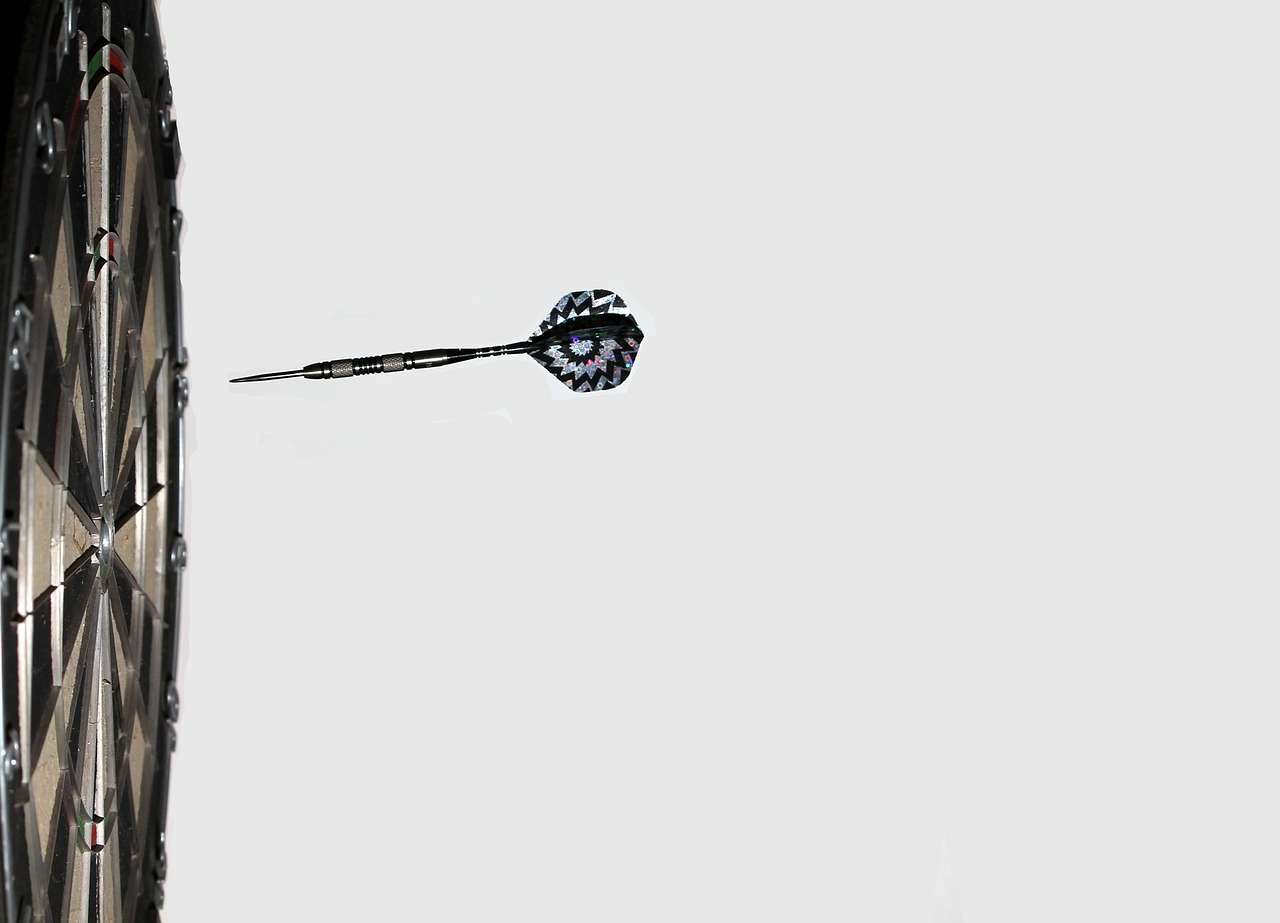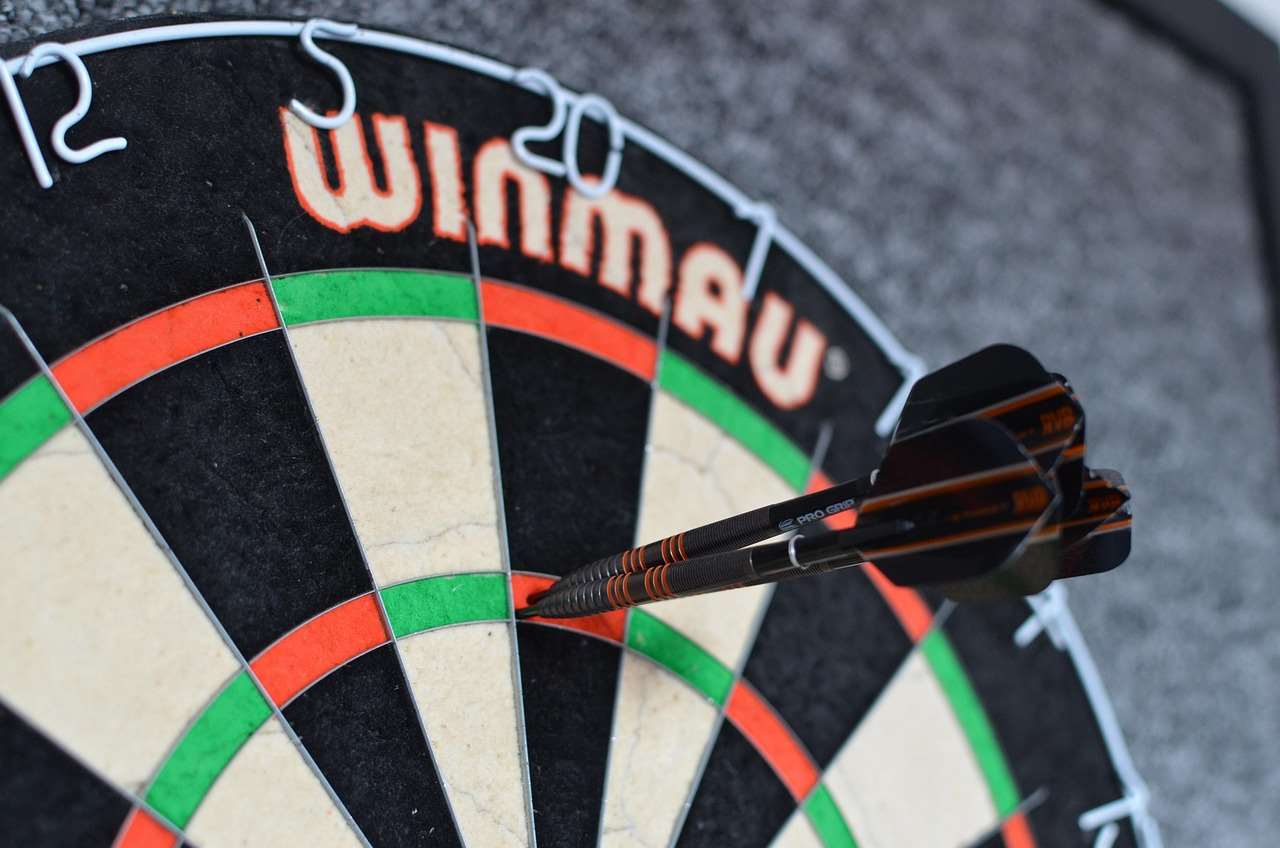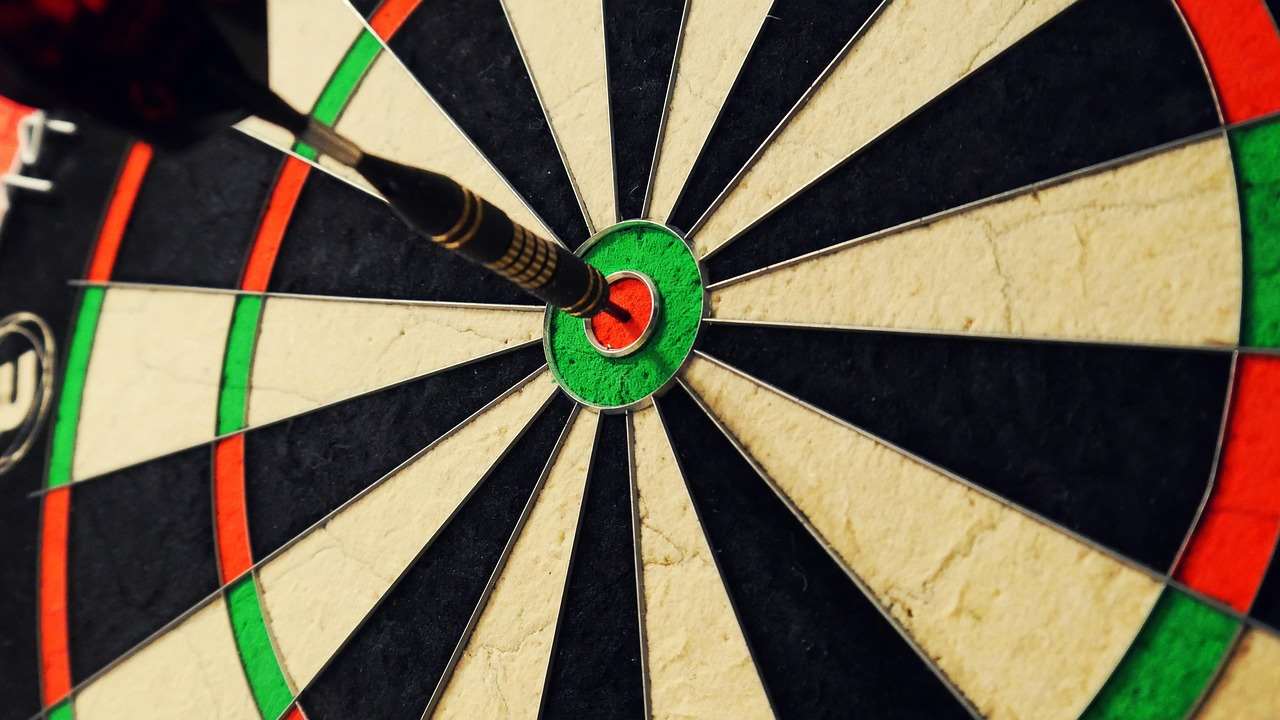The darts maximum score you can achieve in a single throw is 60, accomplished by hitting the treble 20. This article explores everything related to achieving this feat, including the odds, strategy, and other high-scoring possibilities in the game of darts.
⚠️ Still Using Pen & Paper (or a Chalkboard)?! ⚠️
Step into the future! The Dart Counter App handles all the scoring, suggests checkouts, and tracks your stats automatically. It's easier than you think!
Try the Smart Dart Counter App FREE!Ready for an upgrade? Click above!
Understanding the Darts Maximum Score: The 180
The term “darts maximum score” almost always refers to a 180, which is achieved by throwing three darts into the treble 20. This is the highest possible score you can get in a single turn. It’s a moment of glory for any darts player, amateur or professional.
While hitting a single treble 20 is relatively common for experienced players, hitting three in a row requires a combination of skill, focus, and a little bit of luck. The odds against achieving a 180 vary depending on the player’s skill level, but it’s safe to say it’s a challenging feat.

Why is the Treble 20 the Key?
The scoring system in darts is designed so that hitting the number 20 yields the highest possible score. The 20 section on the dartboard is large, and the treble ring multiplies that score by three. Here’s a breakdown:
- Single 20: 20 points
- Double 20: 40 points
- Treble 20: 60 points
Therefore, three treble 20s result in a total of 180 points.
Strategies for Achieving a High Score
While achieving a darts maximum score might seem like pure luck, there are strategies you can employ to increase your chances of hitting those all-important treble 20s. Focusing on technique and practicing consistently are critical.
Stance and Grip
Your stance and grip are fundamental to your throwing accuracy. A consistent stance provides a stable base, while a comfortable and controlled grip allows for a smooth release. Experiment with different grips to find what feels most natural and allows you the greatest control. You can even visit a dart mart to experiment with different types of darts.
Aiming and Focus
Proper aiming involves visualizing the trajectory of your dart and focusing on the target – the treble 20 bed. Many players find it helpful to use a “check point” on the dartboard as a reference. Regular practice will help you develop muscle memory and improve your accuracy over time. Consider using a dartboard lighting system to reduce shadows and enhance visibility, improving your focus.
Consistent Throwing Motion
A smooth, repeatable throwing motion is essential for consistency. Avoid jerky movements and try to keep your arm and wrist relaxed. The follow-through is just as important as the initial throw; ensure you extend your arm fully towards the target. Consistency is key to achieving a darts maximum score, so practice this regularly.

Practice Drills to Improve Your Accuracy
Consistent practice is crucial for improving your darts skills and increasing your chances of hitting a darts maximum score. Here are some drills to help you refine your technique:
- Treble 20 Challenge: Focus solely on hitting the treble 20. Throw multiple sets of three darts and track your progress.
- Around the Clock: Starting at 1, work your way around the dartboard, hitting each number in sequence. This drill improves your overall accuracy and consistency.
- Doubles Practice: Since finishing a game often involves hitting a double, dedicate time to practicing your doubles. This can be especially helpful in tournaments, such as a darts doubles tournament.
Consider using an App to score darts to easily track your scores and identify areas for improvement.
The Psychology of Hitting a 180
Darts is as much a mental game as it is a physical one. Maintaining a positive attitude and managing pressure are vital for performing at your best. When aiming for a darts maximum score, try to stay relaxed and focused on the process rather than the outcome.
Managing Pressure
The pressure of competition can significantly impact your performance. Develop strategies for managing stress, such as deep breathing exercises or visualization techniques. Remember that even the best players miss the target sometimes.
Maintaining Focus
Avoid distractions and stay present in the moment. Focus on each dart individually and resist the urge to overthink. A clear and focused mind will significantly improve your chances of success.

Equipment Matters: Choosing the Right Darts
The right equipment can make a significant difference in your performance. Experiment with different weights, shapes, and materials to find darts that suit your throwing style and grip. Don’t underestimate the importance of a good dart shaft replacement to keep your darts in optimal condition.
Dart Weight and Material
Darts are typically made from tungsten or brass. Tungsten darts are denser and more expensive but offer a slimmer profile, allowing for tighter groupings on the dartboard. Brass darts are more affordable but tend to be bulkier.
The weight of your darts is a matter of personal preference. Most players use darts between 21 and 26 grams. Experiment with different weights to find what feels most comfortable and gives you the best control.
Flights and Shafts
Flights and shafts also play a role in the dart’s trajectory and stability. Different shapes and sizes of flights can affect the dart’s aerodynamics. Shorter shafts tend to provide more stability, while longer shafts can allow for more spin. Experiment to see what combination of flights and shafts works best for you.

Beyond the 180: Other High-Scoring Opportunities
While the darts maximum score of 180 is the most coveted, there are other high-scoring combinations to aim for. Understanding these opportunities can help you maximize your score and improve your chances of winning.
The Ton-Plus (100+)
Scoring 100 or more points in a single turn is considered a “ton” and is a significant achievement. Common ways to score a ton include:
- T20, T20, 20 (140)
- T20, 20, 20 (100)
- T20, S20, S20 (100)
- T20, T10, D10 (100)
- T20, 20, D20 (100)
- Bullseye, T20 (75)
- Bullseye, S20, S20 (65)
- Bullseye, S20, D10 (65)
Checkout Strategies
Knowing how to checkout efficiently is crucial for winning a game of darts. Familiarize yourself with common checkout combinations and practice them regularly. Many apps and online tools, like a darts scorer with checkout, can help you learn and improve your checkout game. Knowing the darts number order helps with quick calculations.

The Culture and History of the 180
The darts maximum score holds a special place in the culture of darts. A 180 is often met with cheers and applause, and it’s a defining moment in any darts match. Commentators frequently celebrate 180s with enthusiastic calls, further cementing its importance in the game.
Memorable 180 Moments
Throughout the history of darts, there have been countless memorable 180 moments. From Phil Taylor’s dominance to Michael van Gerwen’s explosive scoring, these moments have thrilled fans and inspired aspiring players. The pressure of winning a darts champion price can bring out the best in players.
The Future of High Scoring in Darts
As the game of darts continues to evolve, players are constantly pushing the boundaries of what’s possible. With advances in training techniques and equipment, we can expect to see even more 180s and other high-scoring performances in the future. Who knows, maybe we’ll even see a dart double asteroid.
Conclusion
Achieving the darts maximum score is the pinnacle of single-turn scoring in darts. While it requires skill, practice, and a bit of luck, understanding the techniques, strategies, and mental aspects of the game can significantly improve your chances. Practice consistently, experiment with different equipment, and stay focused on your goals. Now, go out there, practice your aim, and start chasing that 180! What are you waiting for? Pick up your darts and start practicing today!
Hi, I’m Dieter, and I created Dartcounter (Dartcounterapp.com). My motivation wasn’t being a darts expert – quite the opposite! When I first started playing, I loved the game but found keeping accurate scores and tracking stats difficult and distracting.
I figured I couldn’t be the only one struggling with this. So, I decided to build a solution: an easy-to-use application that everyone, no matter their experience level, could use to manage scoring effortlessly.
My goal for Dartcounter was simple: let the app handle the numbers – the scoring, the averages, the stats, even checkout suggestions – so players could focus purely on their throw and enjoying the game. It began as a way to solve my own beginner’s problem, and I’m thrilled it has grown into a helpful tool for the wider darts community.